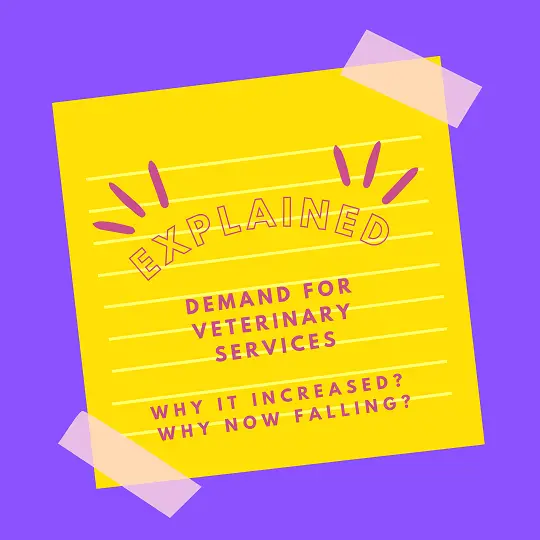Among the effects of the pandemic came a huge increase in demand for veterinary services. Several things drove that spike. Now, it seems demand for veterinary services is settling back down to normal levels. Let's look at these patterns and what they mean for you and your dogs.
Why Demand for Veterinary Services Went Up
A major player in the veterinary world called Brakke Consulting often gathers and analyzes key data in the profession. This list of reasons for the big spike in demand for veterinary services comes both from experts at Brakke and from my many other contacts in the profession and as a long-time observer/writer in the veterinary space.
Here's why suddenly everyone needed more veterinary care during the pandemic:
- Being home so much with pets gave people new awareness of all the ways their pets were suffering and/or struggling. Examples: itching (tags jangling), mobility issues (potentially from increased walks and playtime), and even behavior issues.
- Discretionary funds piled up with people NOT taking vacations, eating out, going to concerts, etc. Everyone had more money to spend or to catch up on needed veterinary care and more easily absorbed cost increases.
- Pet acquisition rates also increased. More pets. More appointments needed.
- Relocation infused smaller communities with more people and pets. As some families fled cities and suburbs for places with more space, they jacked up demand for veterinary services in places not equipped for such sudden growth.
- Breakups also spiked. This gave a lot people more time and energy to focus on existing and new pets.
And, Then ... Demand for Veterinary Services Started Falling
Recently, Brakke announced that demand for veterinary services started returning to pre-pandemic levels in 2022 as people went back to traveling and everything else:
- Veterinary visits dropped 3.1%.
- New patients fell 10% overall.
- 66% (two-thirds) of veterinary practices surveyed report being "less busy" in 2022 than in 2021.
And, yet, veterinary practice revenue overall increased 5.2%, and patient-generated revenue increased 8.3% – mostly due to fee increases. Veterinary medicine is expensive to provide due to rising overhead costs and much-needed salary/wage increases for staff. As, we've discussed before, though, rising cost worsen veterinary care inequities. What's frustrating for some is a tremendous barrier for others.
Staffing issues remain a big drain and huge stress on veterinary practices. Some *might be seeing fewer patients, but to those doing the work while short staffed, it does NOT feel that way. The number of hours worked by veterinarians and credentialed veterinary technicians increased by at least 5 hours per week since 2019.
Imagine working an incredibly hard full-time job, yet being expected to work 5+ hours more each week. It's exhausting. So be nice. The people taking care of our pets remain on the brink, emotionally and otherwise.
What It Means For You
If this pattern continues, with demand for veterinary services going back to normal, here's what that *maybe that means for you. No guarantees, though, because this stuff is complicated, and the situation may differ in your community.
In my optimistic mind, this means:
- Easier to get appointments for routine care
- Shorter wait times to see specialists (Example: We waited many months in 2020 to see Mr. Stix's dermatologist.)
- Less likely to see urgent care and veterinary ERs temporarily closing to new patients
Tips for making your life easier?
- Book all your routine care well in advance, rather than calling and assuming you can get an appointment right away. My 3 dogs will get their annual wellness exams in late April and early May. I booked those appointments online in February. I plan for 3 Fridays in a row. That way, it's less stressful for me. Plus, each one gets undivided attention.
- If you need urgent or emergency care, call first and be sure they can take your case (without a 10-12 hour wait).
- Use veterinary telehealth and teletriage services, if you have access to them through your veterinary practice or pet insurance company or via subscription, to get real-time insights on what to do when you're worried about something with your pets.




0 comments